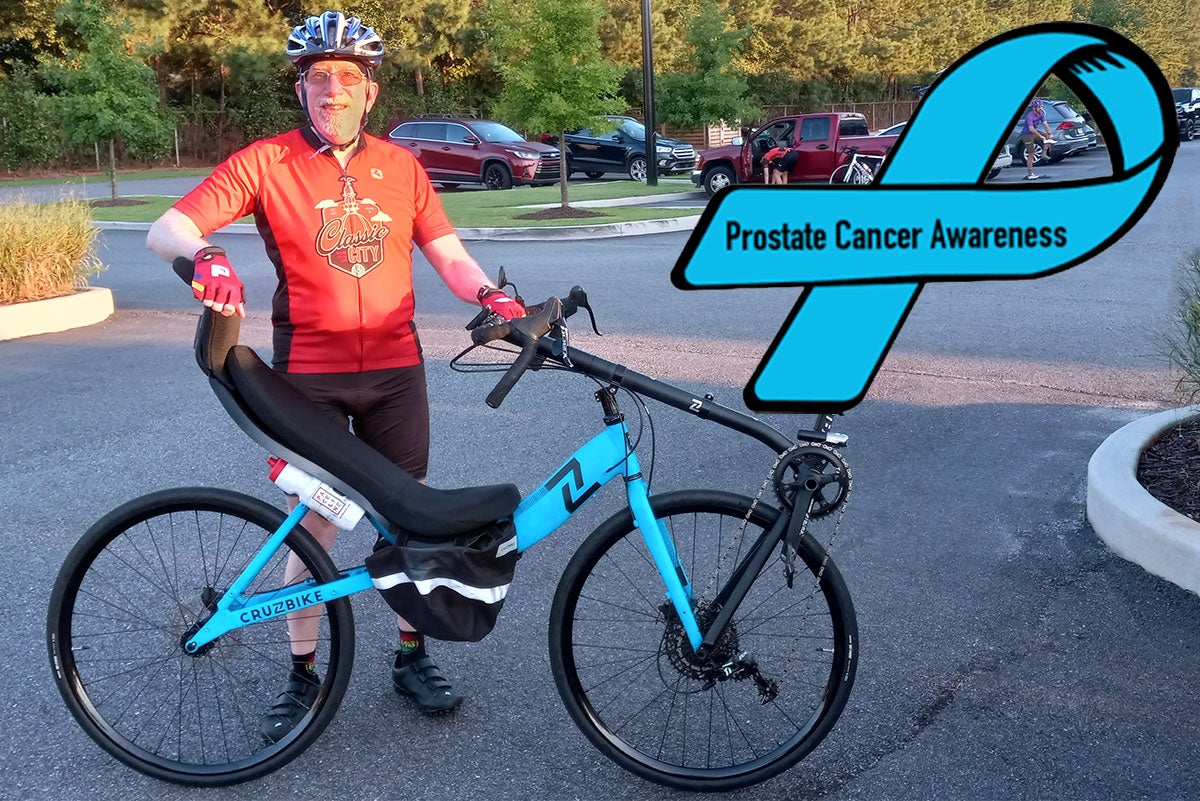Early detection matters
I still struggle saying it: I am a prostate cancer survivor.
I struggle with it because my cancer journey so far has been very different from the difficult journeys so many others with cancer endure.
But that relative ease is the whole point: Early detection worked very well for me.
So, bottom line as we observe National Prostate Cancer Awareness Month in September: Talk to your doctor about screening. It pays to get ahead of it.
What you should know about prostate cancer
1. It is the second-most common cancer in American men. Only skin cancer affects more.
2. About 1-in-8 men will be diagnosed with prostate cancer, roughly the same rate as breast cancer in women.
3. Prostate cancer has no symptoms until late in the disease’s progress.
4. There are about 288,300 new cases of prostate cancer each year, with some 34,700 deaths. The only cancer that kills more men is lung cancer.
5. Prostate cancer is more likely to develop in older men (65 or above) and in non-Hispanic Black men. It is rare in men under 40.
6. Risk factors include age, ethnicity and family history, including inherited mutations of the BRCA1 or BRCA2 genes (the genes that are linked to breast and ovarian cancer in women). Some studies suggest links to diet, smoking, obesity, vasectomy, sexually transmitted diseases or chronic inflammation (prostatitis), but the connection is weak.
Source: American Cancer Society, where you can find lots more reliable, evidence-based information https://www.cancer.org/cancer/prostate-cancer.html
If it has no symptoms, how did you know you had it?
In my mid-40s, I was diagnosed with osteopenia – thinning of the bones. That is unusual in a healthy, athletic man my age. Low testosterone was a possible factor, so my doctor prescribed hormone replacement therapy (HRT). As part of that treatment, we began checking my PSA levels twice a year.
What is PSA?
Prostate-specific antigen. Higher-than-normal levels can indicate that something is wrong. In my case, I had a history of prostate inflammation. For many years, I rode a bicycle that didn’t fit me well. All those hours on that ill-fitting saddle damaged my prostate. In 1998 I switched to a recumbent bicycle that puts absolutely no pressure on the prostate, but there was no fixing the damage I had already done.
So we continued tracking my slowly rising PSA levels. In 2017, when I was 58, my urologist became concerned that another, related value, free PSA, was not trending in lock-step. He recommended a biopsy, which is where they take tissue samples and examine them under a microscope for cancerous cells.
Is that when your cancer journey began?
Yes. And it was a painful start. But the biopsy was well worth the pain, because a few days later, my urologist called and said, “We need to talk in person.” He hadn’t said “cancer,” but I knew. A few days later, at that in-person meeting, he confirmed what I had guessed.
How advanced was your cancer?
We caught it fairly early. My Gleason score (6 on a scale of 3-10) indicated the cancer was in early stages and not especially aggressive, but 9 of 12 biopsy cores were positive, indicating the cancer was widespread in my prostate gland. My staging code was T1c, the worst level (c) of the best tier (T1). That meant the cancer most likely was still confined to the prostate gland.
It also meant I did not have unlimited time to decide what kind of treatment I wanted, or if I wanted to just do “watchful waiting” (with regular biopsies!) to see if treatment was even necessary.
Why wouldn’t you treat cancer?
Because, in many cases, prostate cancer arises so late in life and grows so slowly that something else will get you first. Treatment is not a picnic, so if the patient likely has only a few years left, his quality of life may be higher by NOT treating the cancer. At 58 and healthy, that definitely was not true for me.
Was it easy to decide which treatment to use?
No. I pored over the information my urologist gave me and everything else I could find from reputable sources. Radical prostatectomy with open surgery? Robotic surgery? Brachytherapy? External beam radiation? Cryotherapy? Stay local or go to a specialty center? The more I dug, the more I struggled. In part, that was because all of the options (except cryotherapy) had 99-100% 15-year survival rates – which is good. But immediate impacts, side effects and long-term effects vary, as do your options for “salvage” therapy if the cancer escapes or returns.
At my urologist’s urging, I talked to other specialists. I met with a radiation oncologist and a robotic surgeon. Both were informative, personable, thorough, and welcomed my questions. I talked to friends and relatives who had undergone treatment (a role I have played several times since). I went to a support group meeting and heard the stories of men diagnosed at a wide range of stages – and with varying struggles with recurrence and side effects.
What did you decide?
In the end, I chose brachytherapy as the best option for me. This involves the implantation of dozens of radioactive “seeds” in the walnut-sized prostate gland. The radiation destroys the prostate tissue, but with expert placement, causes minimal damage to nerves, blood vessels, the vas deferens (the tube that carries ejaculate and urine), the bladder and the rectal wall. It had the least risk of urinary incontinence and erectile dysfunction. Success rates were right up there with surgery. And, I could get it done locally by two providers I trusted and who had done hundreds of these procedures.
Were there downsides?
There are always downsides with cancer treatment. For me, the biggest is slow urinary stream, some ED, and living with uncertainty. With surgical removal, the surgeon often can see immediately if cancer has spread beyond the prostate. That’s not possible with brachytherapy. You follow the PSA numbers and hope to see them go down over time. Ideally, they get to zero.
How has it turned out?
I had my brachytherapy implantation in March 2018. My PSA numbers plummeted. As months stretched to years, they kept dwindling. The goal is less than 0.5 ng/ml. I passed that more than two years ago. At my test in September 2022, my PSA level was undetectable – the best number possible – 0.0!
At this point, a recurrence is highly unlikely. But it’s cancer; once you’ve had it, you’re always aware it’s possible. Even so, most days I have no reason to think about it and can live the life I love. I’m deeply grateful to the scientists and providers who have made my cancer journey so successful. I wish the same for everyone who has to hear the words, “You have cancer.”
Do you need a primary care provider?
St. Mary’s Surgical Center offers traditional and robotic prostate removal. Talk to your surgeon for more information.
Remember, you can choose the laboratory where you have your bloodwork done. St. Mary’s offers collection sites at all three of our hospitals and our Outpatient Center at 2470 Daniells Bridge Road, Athens.
About the author
Trained as a journalist, Mark Ralston has been providing public relations for St. Mary’s for more than 30 years. He is married to his high-school sweetheart and is the father of three. He is an avid cyclist, enjoys singing, dog agility, reading and writing, and is president of Firefly Trail Inc., and a board member of Sandy Creek Nature Center Inc.




